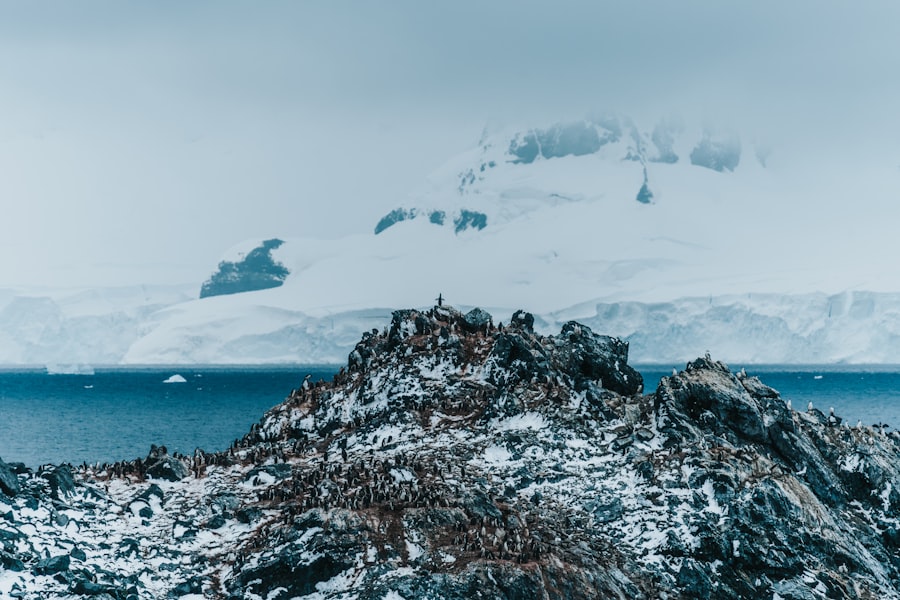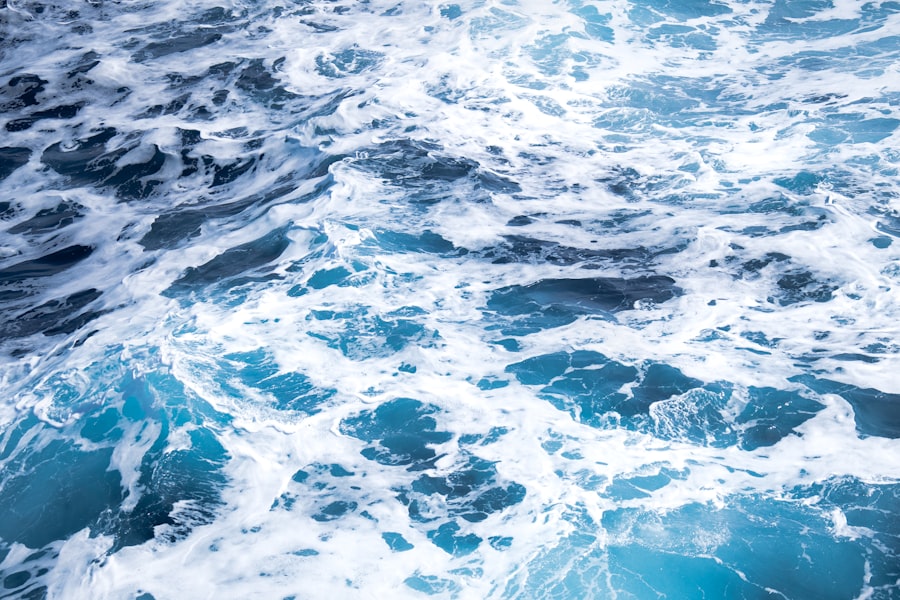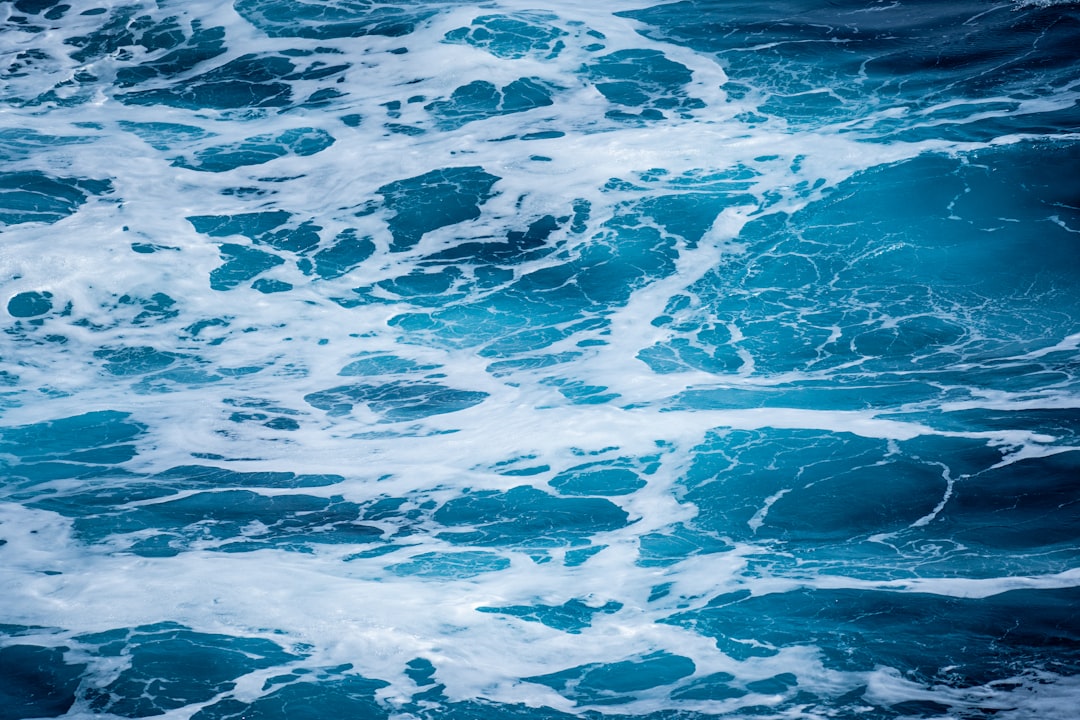The Drake Passage, a body of water situated between the southern tip of South America and Antarctica, is renowned for its tumultuous seas and significant role in global oceanic circulation. Named after the English explorer Sir Francis Drake, who navigated these waters in the late 16th century, the passage serves as a critical conduit for maritime traffic between the Atlantic and Pacific Oceans. Spanning approximately 800 kilometers (500 miles) at its widest point, the Drake Passage is not only a geographical marvel but also a vital ecological zone that influences weather patterns and marine biodiversity.
Navigating the Drake Passage is often considered a rite of passage for sailors and adventurers alike, as its unpredictable conditions can challenge even the most seasoned mariners. The passage is characterized by its strong winds, high waves, and rapidly changing weather, making it both a perilous and awe-inspiring region. The unique geographical features of the passage, including the underwater topography and proximity to the Antarctic continent, contribute to its dynamic environment, which has fascinated scientists and explorers for centuries.
Key Takeaways
- Drake Passage is a narrow body of water between South America’s Cape Horn and the South Shetland Islands of Antarctica, known for its challenging weather and strong ocean currents.
- Weather patterns in Drake Passage are characterized by strong winds, high waves, and rapidly changing conditions, making it one of the roughest seas in the world.
- Ocean currents in Drake Passage, particularly the Antarctic Circumpolar Current, play a crucial role in global ocean circulation and climate regulation.
- Wildlife in Drake Passage includes a diverse range of marine species such as whales, seals, and seabirds, making it a popular destination for wildlife enthusiasts and researchers.
- Research and scientific studies in Drake Passage focus on climate change, oceanography, and marine biology, contributing to our understanding of the region’s ecological significance and environmental challenges.
Weather patterns in Drake Passage
The weather patterns in the Drake Passage are notoriously volatile, influenced by a combination of factors including ocean currents, atmospheric conditions, and geographical features. The region experiences frequent storms and high winds, particularly during the winter months when the Southern Ocean is at its most active. These storms can generate waves that reach heights of over 10 meters (33 feet), creating treacherous conditions for vessels traversing the passage.
The unpredictable nature of the weather has earned the Drake Passage a reputation as one of the most challenging maritime routes in the world. In addition to storms, the passage experiences significant temperature fluctuations throughout the year. The proximity to Antarctica means that cold air masses frequently collide with warmer air from the north, leading to rapid changes in weather conditions.
Fog is also common in the area, further complicating navigation. Sailors must remain vigilant and prepared for sudden shifts in weather, as conditions can change from calm to chaotic within a matter of minutes. This unpredictability not only poses risks for navigation but also plays a crucial role in shaping the unique ecosystems found within the passage.
Ocean currents in Drake Passage

The ocean currents in the Drake Passage are a fundamental aspect of its ecological and climatic significance. The passage serves as a major conduit for the Antarctic Circumpolar Current (ACC), which is the world’s largest ocean current system. This current flows from west to east around Antarctica, connecting the Atlantic, Pacific, and Indian Oceans.
The ACC plays a vital role in regulating global climate by redistributing heat and nutrients across vast oceanic regions. The interaction between the ACC and other currents in the Drake Passage creates a complex system that influences marine life and weather patterns. For instance, the convergence of cold Antarctic waters with warmer currents from the north leads to nutrient upwelling, supporting rich marine ecosystems.
This dynamic interplay of currents not only affects local biodiversity but also has far-reaching implications for global ocean circulation and climate systems. Understanding these currents is essential for scientists studying climate change and its impact on marine environments.
Wildlife in Drake Passage
| Wildlife in Drake Passage | Population | Conservation Status |
|---|---|---|
| Wandering Albatross | Approximately 25,000 pairs | Vulnerable |
| Antarctic Fur Seal | Over 3 million individuals | Least Concern |
| Blue Whale | Unknown, but significant population | Endangered |
| Antarctic Petrel | Unknown, but widespread | Least Concern |
The Drake Passage is home to an astonishing array of wildlife, making it one of the most biodiverse marine regions on the planet.
The presence of these species highlights the ecological importance of the passage and its role in sustaining life in the Southern Ocean.
Among the most iconic inhabitants of the Drake Passage are several species of whales, including humpback whales, orcas, and blue whales. These majestic creatures migrate through the passage during their feeding and breeding seasons, drawing attention from researchers and wildlife enthusiasts alike. Additionally, seabirds such as albatrosses and petrels are commonly seen soaring above the waters, taking advantage of the strong winds to glide effortlessly while searching for food.
The rich biodiversity of the Drake Passage not only captivates those who venture into its waters but also underscores the importance of conservation efforts to protect these fragile ecosystems.
Research and scientific studies in Drake Passage
The Drake Passage has long been a focal point for scientific research due to its unique environmental conditions and ecological significance. Researchers from around the world conduct studies in this region to better understand oceanography, climate change, and marine biology. The passage serves as a natural laboratory for examining how ocean currents interact with atmospheric conditions and how these interactions influence global climate patterns.
One area of particular interest is the study of krill populations, which are vital to the Southern Ocean’s food web. Scientists monitor krill abundance and distribution to assess the health of marine ecosystems and predict how changes in climate may impact these populations. Additionally, research on ocean acidification and its effects on marine life is increasingly important as carbon dioxide levels rise globally.
The findings from studies conducted in the Drake Passage contribute valuable insights into broader environmental issues affecting our planet.
Shipping and transportation in Drake Passage

Shipping and transportation through the Drake Passage are essential for global trade and maritime navigation. The passage serves as a key route for vessels traveling between North America and Antarctica, facilitating the movement of goods and resources. However, navigating these waters requires careful planning and expertise due to their challenging conditions.
Commercial shipping routes often take advantage of favorable weather windows to minimize risks associated with rough seas. Icebreakers and specialized vessels are frequently employed to ensure safe passage through icy waters during certain times of the year. The importance of this route extends beyond commercial interests; it also supports scientific expeditions and tourism ventures that explore Antarctica’s unique landscapes and ecosystems.
As global shipping continues to evolve, understanding the dynamics of navigation in the Drake Passage remains crucial for ensuring safe and efficient maritime operations.
Environmental concerns in Drake Passage
Environmental concerns in the Drake Passage have garnered increasing attention as human activities continue to impact marine ecosystems. One major issue is overfishing, particularly of krill, which plays a critical role in sustaining various marine species. Unsustainable fishing practices can lead to declines in krill populations, with cascading effects on predators such as whales and seals.
Conservation efforts are essential to ensure that fishing practices are managed sustainably to protect these vital ecosystems. Additionally, pollution from shipping activities poses a significant threat to the delicate environment of the Drake Passage. Oil spills, plastic waste, and other contaminants can have devastating effects on marine life and habitats.
As maritime traffic increases due to globalization and tourism, it becomes imperative to implement stricter regulations and monitoring systems to mitigate environmental impacts. Protecting the ecological integrity of the Drake Passage is not only vital for local wildlife but also for maintaining global biodiversity.
Tourism in Drake Passage
Tourism in the Drake Passage has grown significantly over recent years, attracting adventurers seeking to experience its breathtaking landscapes and unique wildlife. Cruise ships often traverse these waters en route to Antarctica, offering passengers opportunities to witness stunning ice formations, glaciers, and diverse marine life up close. The allure of exploring one of Earth’s last frontiers has made this region a popular destination for eco-tourism.
However, increased tourism also raises concerns about environmental sustainability. The influx of visitors can lead to disturbances in wildlife habitats and increased pollution from vessels. Responsible tourism practices are essential to minimize these impacts while allowing people to appreciate the natural beauty of the Drake Passage.
Tour operators are increasingly adopting eco-friendly practices, such as limiting passenger numbers and promoting awareness about conservation efforts among travelers.
Impact of climate change on Drake Passage
Climate change poses significant challenges for the Drake Passage and its surrounding ecosystems. Rising global temperatures are leading to changes in ocean temperatures, salinity levels, and ice cover in Antarctica. These alterations can disrupt established marine food webs and affect species distribution within the passage.
For instance, warming waters may lead to shifts in krill populations, impacting predators that rely on them for sustenance. Moreover, melting glaciers contribute to rising sea levels and increased freshwater input into surrounding oceans, further influencing oceanic circulation patterns. As scientists continue to study these changes, it becomes increasingly clear that understanding climate change’s impact on regions like the Drake Passage is crucial for predicting future ecological shifts.
Collaborative research efforts are essential for developing strategies to mitigate these impacts and protect vulnerable marine ecosystems.
Safety and navigation in Drake Passage
Safety and navigation in the Drake Passage require careful consideration due to its unpredictable weather conditions and challenging maritime environment. Mariners must be well-prepared for sudden changes in weather patterns that can lead to dangerous situations at sea. Advanced navigational technology plays a crucial role in ensuring safe passage through these waters.
Training programs for sailors emphasize risk assessment and emergency preparedness when navigating through the Drake Passage. Knowledge of local weather patterns, ocean currents, and potential hazards is essential for successful navigation. Additionally, international cooperation among maritime authorities helps establish guidelines for safe shipping practices in this region, ensuring that vessels can traverse these waters with minimal risk.
Future outlook for Drake Passage
The future outlook for the Drake Passage is shaped by various factors including climate change, human activity, and ongoing scientific research efforts. As global temperatures continue to rise, understanding how these changes will affect marine ecosystems becomes increasingly important. Collaborative international efforts will be essential for monitoring environmental shifts and implementing conservation strategies that protect this vital region.
Stakeholders must work together to promote responsible tourism practices that minimize ecological impacts while allowing people to experience this remarkable area. The future of the Drake Passage hinges on our ability to navigate these challenges thoughtfully while preserving its unique natural heritage for generations to come.
The Drake Passage, known for its turbulent waters and challenging navigation conditions, remains a significant area of interest for oceanographers and climate scientists today. This narrow body of water between the southern tip of South America and Antarctica plays a crucial role in global ocean circulation and climate patterns. Recent studies have focused on understanding the impact of climate change on this region, particularly how warming temperatures and melting ice are affecting ocean currents and marine ecosystems. For more detailed insights into the current state of the Drake Passage and its implications for global climate, you can explore a related article on
